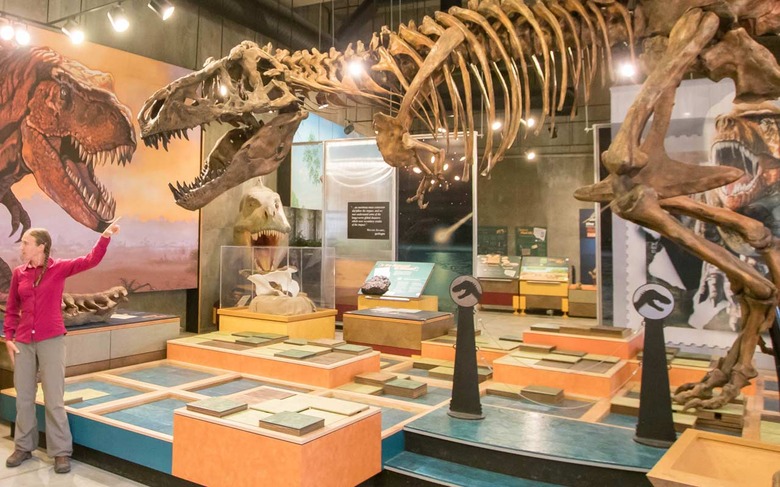Yes, Scotty Is The Eldest And Most "Robust" Tyrannosaurus Rex Yet Found
The crown for most massive T. rex ever found was changed this week as "Scotty" was unveiled in Canada. This hunk of a hunter lived 66 million years ago in prehistoric Saskatchewan. The bones were first unearthed all the way back in the year 1991, which seems not that long ago compared to the time it was last above the dirt – but it's still been covered in sandstone for another decade. Now that the full picture is seen, analysis can commence.
This absolutely thick meat-eating beast is now the largest T. rex ever unearthed AND the biggest dinosaur skeleton thus far unearthed by human beings inside Canada. Scientists also suggest this is the oldest T. rex yet found, at around 30 years of age. "By which I mean, it would have had the most candles on its last birthday cake. You can get an idea of how old a dinosaur is by cutting into its bones and studying its growth patterns. Scotty is all old growth." said Scott Persons, University of Alberta paleontologist and leader of a study on the dinosaur.
Images in this article were captured by Saskatchewanderer at the T.rex Discovery Centre, part of the Royal Saskatchewan Museum in Eastend, SK, Canada. Below you'll be able to get an OK idea of the size of this T. rex near an adult human.

Leg bone analysis of this creature indicated that it had a living weight of over 8,800 kilograms. That's around 19,400 pounds (lbs), making it heavier than today's most massive land animal: the African bush elephant. The average male African bush elephant weighs in at around 13,000 pounds, and the largest male African bush elephant weighed 22,928 pounds – humongous!
Scotty is the name of the T. rex given by the crew of paleontologists that first uncovered the bones of this beefy monster in modern times. They shared a celebratory bottle of scotch the night they first discovered Scotty, and so they named him Scotty.
"There is considerable size variability among Tyrannosaurus. Some individuals were lankier than others and some were more robust. Scotty exemplifies the robust. (He) comes out a bit heftier than other T. rex specimens," said Persons. "This is the rex of rexes."
The official code for this set of bones, as listed with the Royal Saskatchewan Museum, is RSM P2523.8. According to the study published by Persons et al. this week, Scotty is an example of ontogenetic maturity and osteological robustness. Because of this robustness and maturity, Scotty did the following.
"RSM P2523.8 [Scotty] offers support for prior hypotheses that a sampling bias occurs throughout the Dinosauria, making it likely that most taxa grew to significantly greater size than current known specimens indicate."
You can learn more about this absolute unit known as Scotty in a research paper entitled "An Older and Exceptionally Large Adult Specimen of Tyrannosaurus rex" as hosted by the Wiley Online Library. This paper was first published on March 21st, 2019, and can be found with the code DOI:10.1002/ar.24118 as of right this minute.
